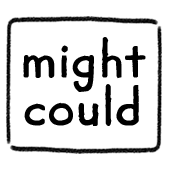
I’ve been feeling a lack of inspiration or motivation to draw lately. I still feel the drive to be creative, but I’ve been writing more than drawing these past few months.
Drawing was my first love as an artist though, and I still believe it’s my primary passion. So why does drawing feel empty and shallow to me now?
Last week I decided to dig deeper into this question, and I’ve come to a conclusion: I feel like my drawings have become pointless or insubstantial.
For the last 2 years, I was drawing for hours each day to complete my Layla and the Bots graphic novel series. Those drawings felt purposeful and meaningful, not only because I had a professional contract to fulfill, but also because I was an integral part of telling an important story. That book series was sharing a message of problem-solving, creativity, girl power, and also helping create new, independent readers. So, when I was drawing those pictures, I felt full of purpose and meaning.
But then in early 2021, I finished the four books. And so, I was back to drawing random, one-off characters in my sketchbook. In contrast to such obvious purpose in my book illustrations, my sketchbook drawings now felt empty. What was the point of drawing a fictional witch character and posting it on Instagram, where a few people saw it once and then probably never thought about it again? What is that drawing doing? What am I doing? Why am I drawing anything at all?
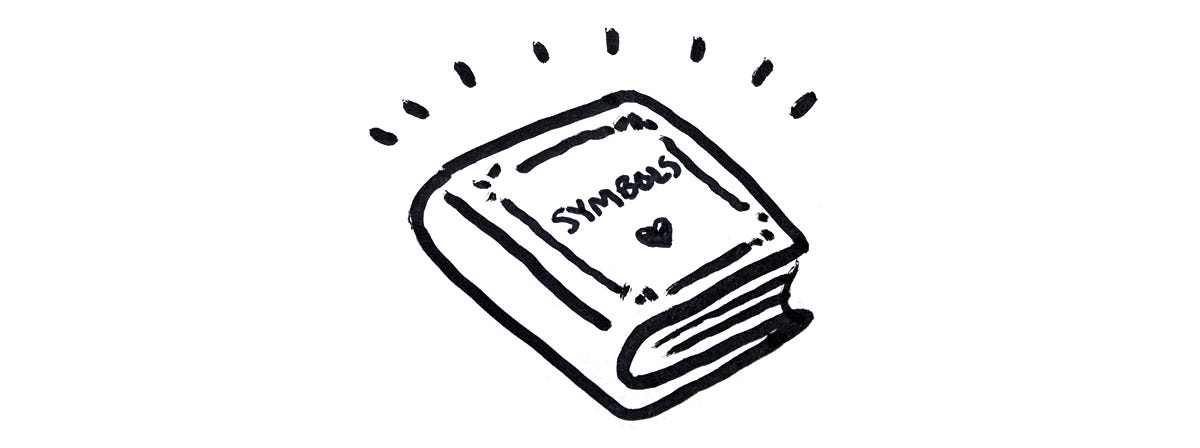
Once I realized that lack of purpose was perhaps what was causing my drawing creative block and that I missed drawing and wanted to begin drawing more again, I considered how I could address the issue. The solution I’ve been experimenting with is exploring the world of visual symbols. For the past couple of weeks, I’ve been looking into ancient symbolic imagery from different cultures like Tibetan Buddhism, Greek and Norse mythology, Christianity, and more.
Humans have been using symbols to communicate ideas for centuries, and these ancient symbols are now inherently imbued with meaning themselves. Through the process of drawing them, I can tap into and channel that deep meaning myself as well.
Thousands of years of folklore, rituals, and storytelling have embedded these visual symbols into our minds, and even today, we are able to feel their associations and meaning, often without consciously realizing it. Each image’s symbolic meaning is buried deep within our collective psyche.
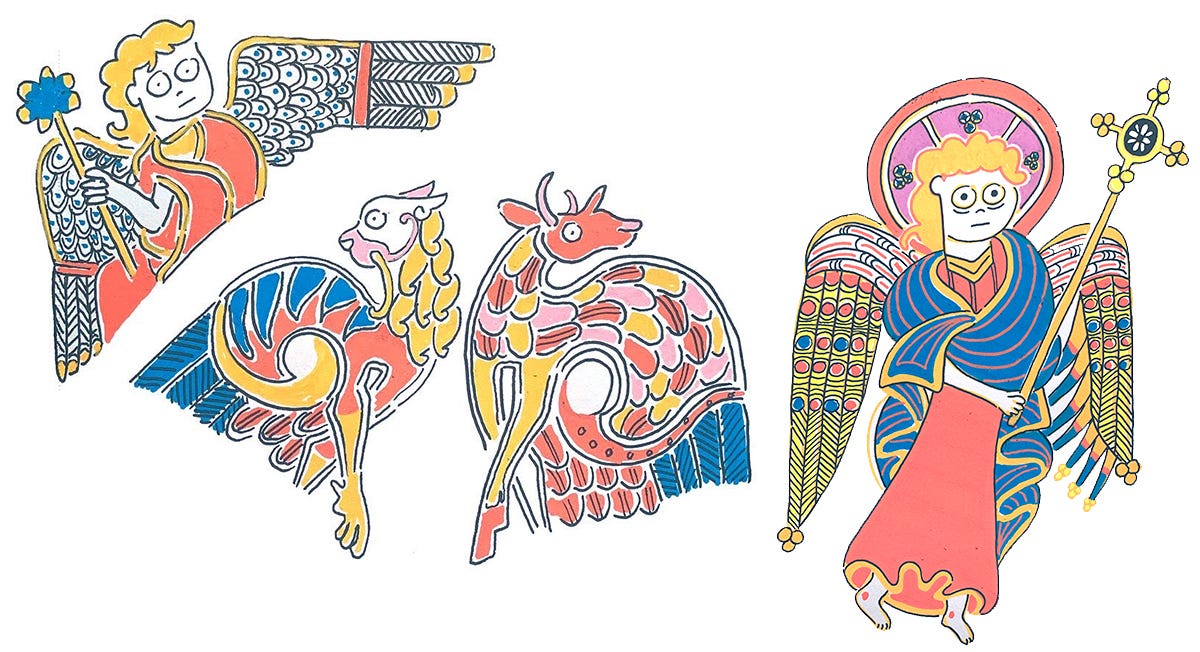
Considering this world of symbols made me recognize an important purpose of artmaking: that drawing is a method of making sense of the world. It’s a way of seeing, interpreting, and analyzing the world around us, organizing it into categories in our minds, and coming to our own conclusions about life.
With that mindset, we can see that all images are symbolic and have inner meaning based on centuries of human culture. And that means that any drawing—every drawing— can be meaningful.
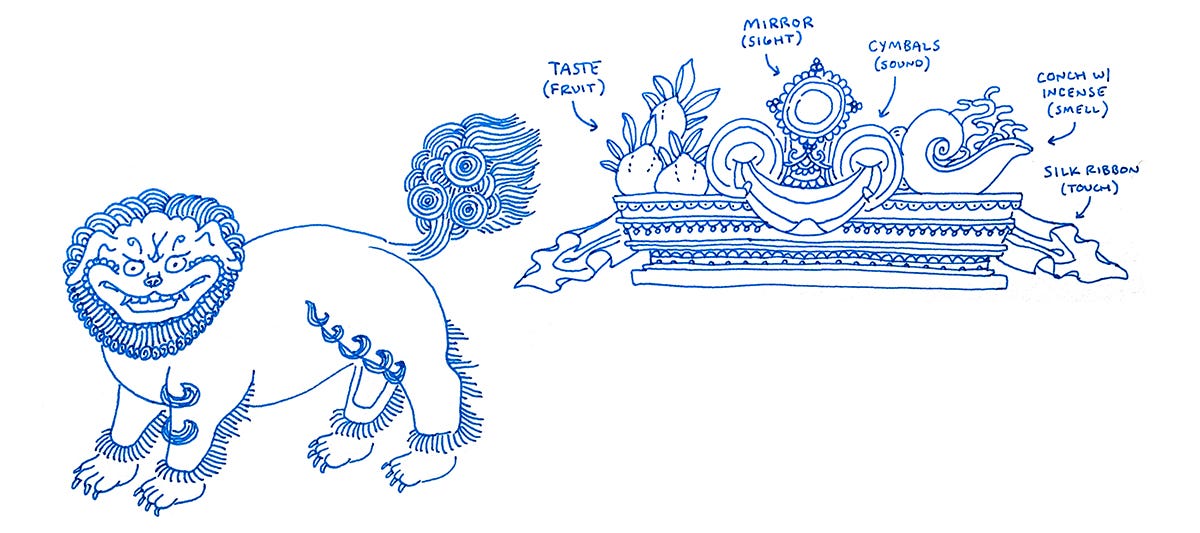
This whole idea reminds me of a story my dad once told me about my maiden name, Fleming. One day when my dad was younger he discovered that the Flemings had once been a large family clan in Scotland, with castles, a coat of arms, and even lords and ladies. Excited about this new family history to explore, he hopped on the internet to find out what glorious animal had been chosen to represent the Fleming clan. Perhaps a fearsome bear, or an elegant lion, or maybe a majestic stag!
He quickly uncovered the actual Fleming crest, topped with a… goat.
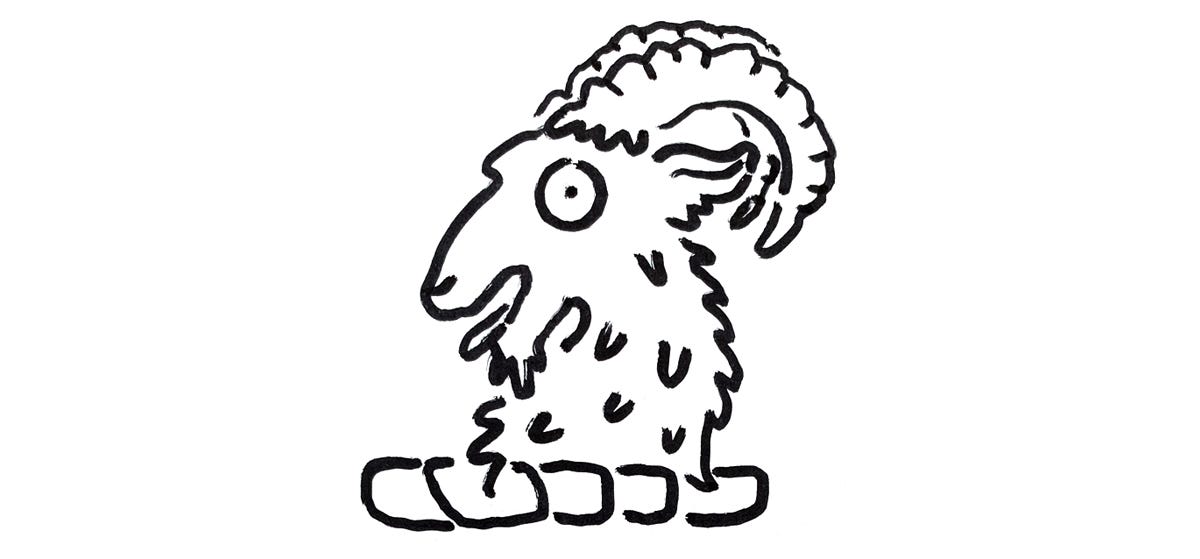
A goat! And not just any goat, but a tiny goat with his little tongue sticking out. You can imagine my dad’s disappointment.
But what really is a goat? What happens if we look at the ancient symbolism and meaning of a goat? What has the image of goat meant to humans over our collective history? What story does the goat have to tell?
Well, first of all, you can compare the goat to its similar companion, the sheep. Sheep are seen as cooperative, dependent, creatures peacefully following the communal herd. But the goat is different. It shows up again and again in mythology, folklore, and literature as a cunning, feisty, independent creature. While the flock of sheep meanders aimlessly through the fields, the goat breaks off and climbs up the tallest fence, roof, or mountain it can find.
Goats also have strange eyes with rectangular pupils, making them appear other-worldly. But the unique eye shape allows them to see more widely than other animals and see better at night—they are very observant and perceptive creatures. They can be silly and rowdy, jumping on the backs of other animals, but also nurturing, providing milk, food, and fur to keep humans warm and fed.
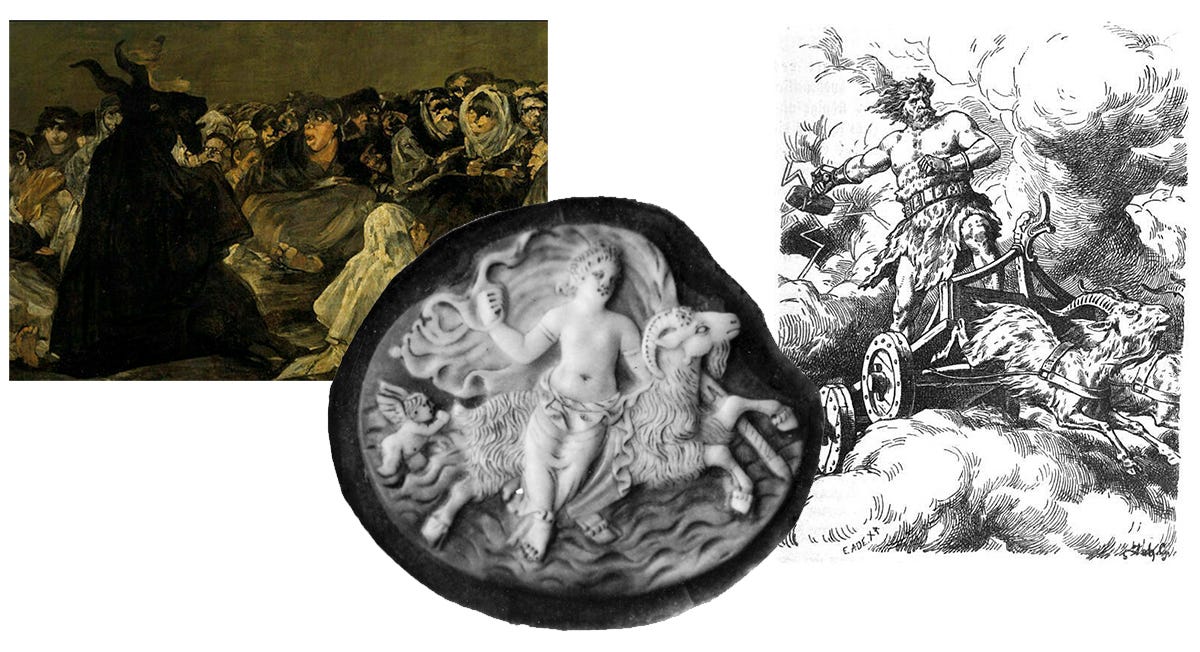
In Norse mythology, Thor’s chariot is led by two magical goats that regenerate the next day even when cooked and eaten.
In Christian stories, the goat is often depicted from a darker perspective. Sometimes the devil himself is represented as a half-man, half-goat creature.
In Greek mythology, Aphrodite, the goddess of love, was often depicted riding on a goat. This may be where the goat began to symbolize fertility. That connection may also have been formed by the Greek god, Pan, associated with fertility, who was also half-man, half-goat.
So now, with all that ancient symbolism in mind, let’s reconsider the goat as the head of the Fleming Clan. We now see an animal that symbolizes independence, intelligence, nurturing, and fertility, with a side of dark mystery. Not bad for a family crest, eh?

Anyways, I think my point with all of this is that I’ve been enjoying rediscovering the purpose and meaning of visual art through the world of symbolism. Researching how humans have imbued images with meaning over years of storytelling has helped to reignite my inspiration for drawing.
I can see now that every image has inherent meaning, even a seemingly random image of a goat. I may not always know why I drew something or what it means. But there is always meaning and purpose embedded within every drawing—we just have to look close enough.
Thanks for reading!
<3,
Christine
